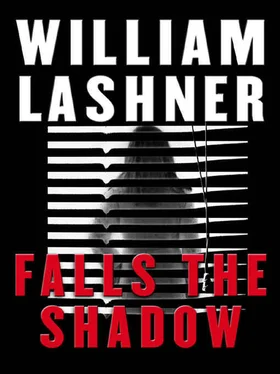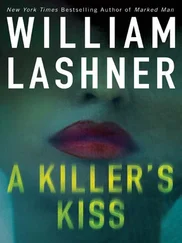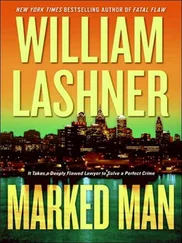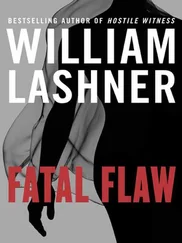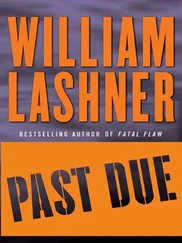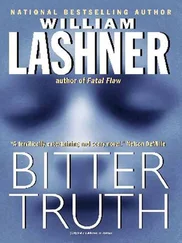“Thank you, Detective,” said Dalton, heading back to her seat. “I pass the witness.”
“I didn’t know he was being graded,” I said, to some titters, as I rose, pulled my jacket straight, buttoned it over my yellow tie.
I stood at the podium for a moment, thought about what I was going to do, what I was getting myself into. Torricelli stared at me, at first with wariness and then with a slight smile as he saw my hesitation and mistook it for fear of his undoubted gifts on the stand. But it wasn’t Torricelli I was afraid of just then.
I felt a cold wind flit across the back of my neck. I spun around. A reporter, out for a smoke, had slipped back inside, letting in a draft. He started at my sudden movement, as if he had been caught at something. My gaze slipped over to Whitney Robinson, who stared at me with his forehead creased in concern, as if somehow he could read my exact dilemma.
“Mr. Carl,” said the judge.
I turned around again. “Yes, sir.”
“Do you have questions for this witness?”
I thought about it for a moment more, slipped my tongue into the gap that still existed in my teeth, pressed its tip into the hole in my gum. I felt a clip of pain just then, and somehow that decided it. I pounded the podium lightly.
“Oh, yes,” I said.
“Detective Torricelli,” I began, “you were the lead investigator on the Leesa Dubé murder, isn’t that right?”
“I took the lead on this case, yeah,” he said from the stand. “It was my ups when the call came in.”
“And as part of your investigation, you spoke to Mrs. Dubé’s friends and family, isn’t that right?”
“When we are investigating a murder, we try to learn as much about the victim as we can.”
“How did you find the names of all these people you interviewed?”
“We spoke to the victim’s family, and they gave us names of friends. The friends gave us more names. That’s how it’s done.”
“You didn’t use a little black book?”
“During our initial and subsequent searches of the victim’s apartment, we couldn’t locate an address book or a PDA. Without that, we were forced to build a chain of contacts from our interviews.”
“Was that unusual, not finding an address book or a PDA?”
“Not really, though in this case it was a little surprising. Mrs. Dubé seemed to be a very organized woman.”
“Could the address book have been stolen during the time of the murder?”
“There was no other evidence of a robbery. It’s unlikely that a robber would leave the jewels and cash and yet take the address book.”
“Unless the murderer’s name was in the book and he wanted to remain nameless. Now, Detective, without the address book, were you able to talk to Leesa Dubé’s doctors?”
“We found some names and made some calls, sure, but such inquiries are often not effective, and these calls were similarly not helpful. There is the matter of doctor-patient confidentiality, which often makes getting information difficult, and the prior doctor visits can happen months, sometimes years, before the crime. In specific cases, where the medical status of the victim becomes more relevant, we have ways to get more specific help.”
“Was this one of those cases?”
“No. The report of the medical examiner gave us no indication of a medical problem. We did find the name of the victim’s gynecologist, and we asked if she had noticed anything unusual going on with the victim in the year or so before her murder. The answer she gave, without violating doctor-patient privilege, was no.”
“What other doctors did you call?”
“The pediatrician for her daughter. Mrs. Cullen, the victim’s mother, had the pediatrician’s name. Again, there was nothing noted by the doctor which might have had an impact on the investigation.”
“None of the abuse invented by Mr. Gullicksen for the divorce pleadings?”
“Objection to the term invented,” said Mia Dalton.
“I’ll rephrase. Did the child’s doctor see any signs of abuse?”
“There was nothing noted by the pediatrician, no.”
I turned, smiled at François like an uncle who had just received comforting news. These are the things you resort to in a murder case. “Did you contact any other doctors in the course of your investigation, Detective?”
“Not that I recall.”
“What about the victim’s psychiatrist?”
“Objection,” said Dalton. “Assumes a fact not in evidence.”
“Sustained.”
“Were you aware, Detective, if the deceased was seeing a psychiatrist?”
“No.”
“A dermatologist?”
“No.”
“A chiropractor?”
“No.”
“A dentist?”
“No.”
“You weren’t aware whether or not the victim had a dentist?”
“I assume she did, but it wasn’t of much interest to us. There was no question as to identity, for which dental records might have been of use. There was no damage to the victim’s teeth in the attack. The M.E.’s report noted that the victim’s teeth were in excellent shape. There was no reason to talk to her dentist.”
“Except that Leesa Dubé’s dentist might have been one of the names in the missing book.”
“Is that a question, Counselor?” said Torricelli.
“Not really, but this is: There was quite a lot of Leesa Dubé’s blood spilled on the floor at the time of her murder, isn’t that correct?”
“Yeah. So?”
“Is it possible to determine if all of the blood that bled out of the deceased was accounted for on the floor, or if some was missing?”
“No.”
“So some might have been taken, collected for some purpose by the killer, isn’t that right?”
“Technically, yes.”
“Only technically?”
“Well, if such was the case, we would expect to see some indication of the collection process. Everything leaves a mark.”
“Let me show you this photograph of the crime scene, People’s Exhibit Ten, which shows the apartment floor covered in blood. I want you to look at the bottom-left corner of the photograph. Do you see a pattern there, Detective?”
“Not really.”
“You don’t see a swirl in the blood?”
“I don’t know, maybe.”
“Maybe a swirl, is that it? Maybe a swirl caused by a small towel, used to wipe up some blood, for some later purpose?”
“I can’t tell from this photograph.”
“Maybe to be stored in a plastic bag, to be used later to wipe some of the blood off on a shirt or on the sole of a boot?”
“Am I supposed to answer that?”
“Where was the photograph in Mrs. Dubé’s hand taken from?”
“I don’t know.”
“Your theory is that she was shot in the neck and in her death throes grabbed the photograph of her husband to show it was he who killed her, isn’t that right?”
“I’m just testifying as to what I found.”
“The woman was mortally wounded in the neck, was bleeding badly, and you believe she grabbed hold of a photograph. My questions is, examining the blood at the crime scene as you did, the position of her body, the layout of the room, could you tell us from where she took the photograph?”
“Not precisely.”
“Isn’t it just as likely that the photograph was put into her hand?”
“She was gripping it pretty tightly.”
“But right after her death, her muscles would have gone slack, that’s what the coroner testified to. Isn’t it possible that the photograph was put into her lifeless hand and then the fingers pressed over it to frame the husband?”
“It seems far-fetched.”
“And then the blood was taken, as that swirl shows, to be placed in the husband’s apartment.”
“You’re going off into the ozone there, Counselor.”
Читать дальше
